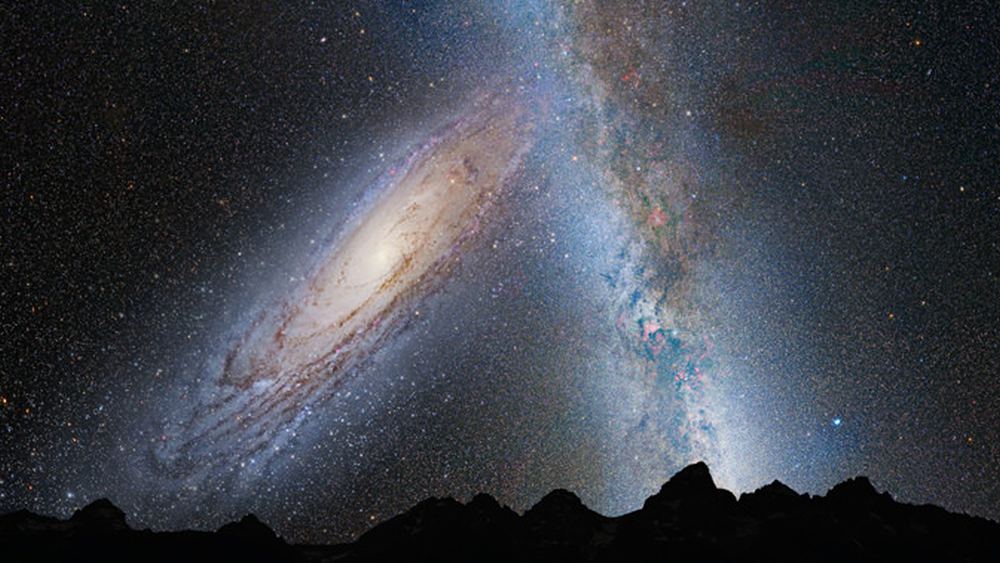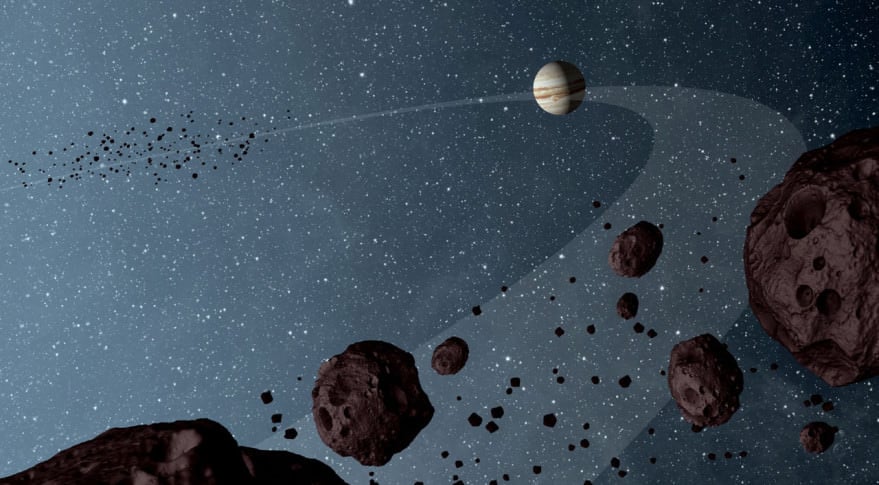
Check out my new book "Night Sky with the Naked Eye" that explores all the wonderful things you can see in the heavens without any special equipment.
Continue reading

The first Antares rocket liftoff in nearly two years is now being targeted for Oct. 13 on what is sure to be a dazzling nighttime leap from NASA's Virginia launch base - and potentially offering a thrilling skyshow to millions of US East Coast spectators, if all goes well.
Continue reading

Continue reading

Before the historic Apollo-11 mission sent the first astronauts to the Moon, several robotic missions were mounted to the lunar surface as well.
Continue reading

Continue reading

Discovered in the late 18th century, Cepheid Variable stars have become an important tool for measuring the size of the Universe.
Continue reading

Continue reading

Missing Jove? The largest planet in our is currently on the far side of the Sun, and just passed solar conjunction on September 26th, 2016. October now sees Jupiter slowly return to the dawn sky. Follow that gas giant, as an interesting set of double shadow transits transpires in late October leading in to early November.
Continue reading

The first of the massive fuel tanks that will fly on the maiden launch of NASA's SLS mega rocket in late 2018 has completed welding at the agency's rocket manufacturing facility in New Orleans - marking a giant step forward for NASA's goal of sending astronauts on a 'Journey to Mars' in the 2030s.
Continue reading

The Schiaparelli lander will attempt it's landing on Mars in 15 days. Will it succeed, or join the long list of failed Martian landing attempts?
Continue reading

In the wake of the explosion that destroyed SpaceX's Falcon 9 rocket in September, investigators are looking into possibilities other than a simple technical failure
Continue reading
Black holes are the most impressive objects in the Universe, but when happens when they crash into each other is absolutely mind-bending. They distort space and time itself, sending ripples out into the Universe.
Continue reading

Continue reading

There's been plenty of talk about crewed missions to Mars happening in the next few decades. So when exactly will humans set foot on Mars?
Continue reading

Located in the direction of Sagittarius, approximately 10,000 light years from Earth, is the beautiful Small Sagittarius Star Cloud (aka. Messier 24)
Continue reading

Developed near the turn of the century, CubeSat technology has made space exploration and orbital research a lot more accessible.
Continue reading

In about 4 billion years, the Milky Way and Andromeda galaxies will collide. Known as a galactic merger, this process is actually quite common in our Universe.
Continue reading

During the early Space Race, both the American and Soviet space programs conducted tests flights using animals. In the Soviet's case, this include the famous "space dogs".
Continue reading

Continue reading
Continue reading

Continue reading

After 10 years pursuing 67P/C-G and more than two years studying it from orbit, Rosetta made the comet's icy nucleus its final resting place this morning.
Continue reading

Earth has been photographed multiple times from Mars, both from orbit (by orbital missions) and from the surface (rover missions).
Continue reading

NASA's newest planetary probe, the OSIRIS-REx asteroid sampling spacecraft, is merrily snapping its 'First-Light' images following the successful power up and health check of all of the probes science instruments, barely three weeks after a stunning sunset launch from the Florida Space Coast - as it is outbound to asteroid Bennu.
Continue reading

This year's Nobel Prize in physics is expected to be be conferred on the three scientists who invented the process that led to the discovery of gravitational waves, but not the scientist who made it possible.
Continue reading

When it comes to space helmets, there's one rule: you keep your helmet on. But there might be a couple of places in the Solar System where you can take your helmet off, just for a few moments, and not die instantly.
Continue reading

Radiocarbon dating (aka. carbon dating) measures the half-life of carbon-14, which occurs naturally in our atmosphere, to determine the age of organic matter.
Continue reading

Some of the questions Elon Musk fielded at his recent presentation were truly embarrassing. But he handled it well.
Continue reading

KENNEDY SPACE CENTER VISITOR COMPLEX, FL - Sending humans on a 'Journey to Mars' and developing strategies and hardware to accomplish the daunting task of getting 'Humans to Mars' is NASA's agency wide goal and the goal of many space enthusiasts - including Apollo 11 moonwalker Buzz Aldrin.
Continue reading

Elon Musk announced the new Interplanetary Transport Ship on Monday. That night, Scott Manley recreated the spacecraft and booster in Kerbal Space Program.
Continue reading

Continue reading

Images taken by the MESSENGER spacecraft have shown features on Mercury's surface that indicate that the planet is still tectonically active
Continue reading

Absolute Zero is the coldest possible temperature, the point at which you can no longer extract any energy from a system. How close have we gotten to this lowest of lows?
Continue reading

A total eclipses is an amazing sight, occurring whenever the Moon passes between the Sun and the Earth (or the Earth between the Sun and Moon) and totally obscures the incoming light.
Continue reading

Today, NASA announced that images taken by the Hubble Space Telescope have shown more evidence of water plumes on Europa's surface, bolstering evidence of a warm water ocean in its interior and providing opportunities for future study.
Continue reading
Continue reading

The month of October is upon us this weekend, and with it, one of the better meteor showers is active: the Orionids.
Continue reading

The northern lights are an amazing thing to behold, and can be seen regularly from locations spanning from Siberia and Alaska to Northern Canada and Scandinavia.
Continue reading

A powerful explosion on an otherwise obscure star in the constellation Lupus is now bright enough to see in binoculars.
Continue reading

Our beyond magnificent Curiosity rover has just finished her latest Red Planet drilling campaign - at the rock target called "Quela" - into the simply unfathomable alien landscapes she is currently exploring at the "Murray Buttes" region of lower Mount Sharp. And it's all in a Sols (or Martian Day's) work for our intrepid Curiosity!
Continue reading

Like everything else in the Universe, stars come in a variety of shapes and sizes, and colors, and three of which are interconnected.
Continue reading

The Rosetta comet probe will leave its flyover orbit today to prepare for its dramatic free-fall descent to the surface of Comet 67P/C-G on Friday morning Sept. 30.
Continue reading

Debris flows are fast-moving landslides made up of liquefied, unconsolidated, and saturated mass. They are one of the most dangerous natural hazards in the world today.
Continue reading

Investigators have determined that a "large breach" in the second stage helium system likely triggered the catastrophic Falcon 9 launch pad explosion that suddenly destroyed the rocket and Israeli commercial payload during a routine fueling test three weeks ago, SpaceX announced today, Friday, Sept. 23.
Continue reading

Bad news, our Sun is living on borrowed time. It's only got a few billion years left. But there might be a way we can extend its life, and make it last for trillions of years into the future.
Continue reading

Continue reading

With the recent passage of the NASA Transition Authorization Act of 2016, NASA can look forward to financial stability in the coming year
Continue reading

Continue reading

Using data from the PS1 survey, an international team of researchers has made some interesting discoveries about Neptune's Trojan asteroids
Continue reading

Continue reading

 Universe Today
Universe Today













































